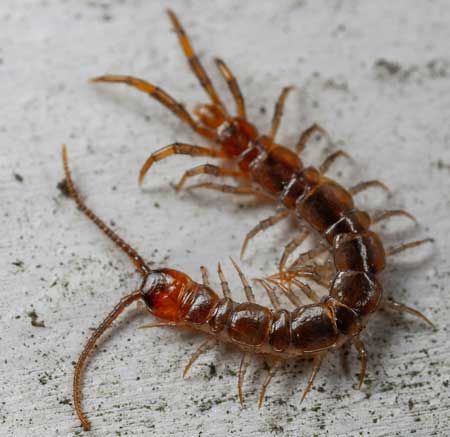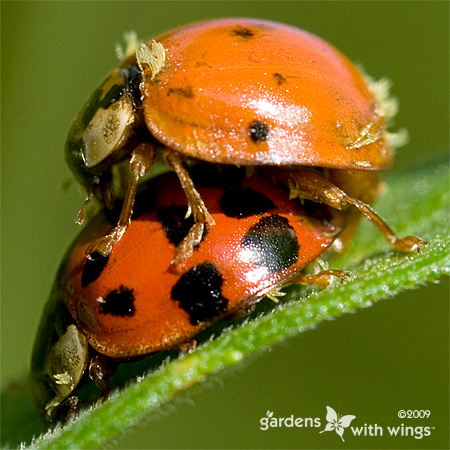When you create a butterfly garden, you’re inviting much more than just colorful winged visitors. A thriving garden filled with native plants and blooming flowers naturally attracts dozens of other creatures, many of which play important roles in keeping your space healthy. Some of the most valuable residents are the predators that hunt pest insects, providing natural pest control without any chemicals that could harm butterflies.

Learning to recognize and appreciate these beneficial hunters changes how you view your garden. Instead of reaching for pesticides when you spot something crawling through the mulch, you’ll start to see these creatures as partners in creating a balanced ecosystem where butterflies can flourish.
Why Predators Matter in Butterfly Gardens
Pesticides pose a serious threat to butterflies at every life stage. The chemicals that kill aphids or beetles also harm caterpillars, chrysalises, and adult butterflies. Even products labeled as organic or natural can disrupt the delicate balance your garden needs.
Beneficial predators offer a better solution. They hunt pest insects constantly, keeping populations under control without any intervention from you. A garden with healthy predator populations can handle pest outbreaks naturally, rarely requiring you to step in at all. These hunters work around the clock, finding pests in places you’d never think to look.
The presence of diverse predators also indicates overall garden health. When you see spiders, beetles, and other hunters thriving in your space, it means you’ve created conditions that support complex food webs and biological diversity.
Centipedes: Fast Nighttime Hunters
Centipedes might startle you if you flip over a rock or move some mulch, but these quick arthropods are valuable garden allies. They’re easy to confuse with millipedes at first glance, but centipedes move much faster and have a flatter body shape.
If you’ve ever wondered how many legs does a centipede have, the answer is more complex than you might expect. Despite their name suggesting 100 legs, centipedes actually have one pair of legs per body segment, giving them anywhere from 30 to 354 legs depending on the species. Most garden centipedes have between 30 and 50 legs. Millipedes, by contrast, have two pairs of legs per segment and move much more slowly.
Centipedes hunt at night, preying on slugs, snails, and soft-bodied insects that damage plants. They use venomous claws to subdue their prey, making them effective hunters despite their small size. While they can bite humans if handled roughly, they’re not aggressive and prefer to flee when disturbed.
These predators thrive in moist areas with plenty of cover. Leaving some leaf litter, mulch, or flat stones in your garden gives them the dark, damp hiding spots they need during the day. The “messy” corners of your garden often support the highest centipede populations.
Spiders: Tireless Pest Controllers
Garden spiders come in remarkable variety, from the impressive orb weavers that build geometric webs to the small jumping spiders that actively hunt prey. Each type contributes to pest control in different ways, and together they catch an enormous number of insects that would otherwise damage your plants or spread disease.
Web-building spiders like orb weavers catch flying insects including aphids, gnats, and small moths. These webs work continuously even when you’re not in the garden. Hunting spiders like wolf spiders and jumping spiders actively stalk their prey, catching insects on leaves and stems where web-builders can’t reach.
Most garden spiders are completely harmless to humans. Learning to identify the common species in your area helps overcome any fear you might have. When you find a spider web in an inconvenient spot, consider relocating it rather than destroying it. That spider represents hours of future pest control.
Ground Beetles and Other Soil Protectors
Ground beetles might be the most underappreciated predators in your garden. These dark, fast-moving insects emerge at night to hunt slugs, snails, cutworms, and other pests that attack plants at soil level. Both adult beetles and their larvae feed on pests, providing control throughout the season.
You can encourage ground beetles by maintaining mulch and reducing how much you disturb the soil. These beetles need stable habitat to complete their life cycles. Stone pathways and permanent garden borders give them excellent shelter while still looking tidy.
Ladybugs and Their Hungry Larvae

Everyone recognizes adult ladybugs as beneficial insects, but fewer people realize that ladybug larvae might be even more valuable. These odd-looking larvae, which resemble tiny alligators, consume aphids at an impressive rate as they grow. A single larva can eat hundreds of aphids before becoming an adult.
To keep ladybugs in your garden, focus on providing pollen and nectar sources for the adults rather than purchasing ladybugs to release. Store-bought ladybugs almost always fly away within days. Native populations that establish naturally will stay and reproduce, providing ongoing pest control.
Creating Space for Predators
Supporting beneficial predators requires thinking about garden structure beyond just choosing plants. These creatures need shelter, hunting grounds, and places to overwinter. Leaving some leaf litter, creating rock piles, and maintaining areas of varied vegetation height all help predators thrive.
Water sources matter too. A shallow dish of water or a naturally damp area provides drinking spots for many beneficial insects. Just make sure water doesn’t sit long enough to become a mosquito breeding site.
Working With Nature
A garden that supports beneficial predators won’t be completely free of pests or predation. Some caterpillars will get eaten. Some aphids will survive. This is natural and healthy. The goal is balance, not elimination. When you provide abundant host plants and create diverse habitat, your butterfly garden can support both the butterflies you’re trying to attract and the predators that keep the system functioning. That’s when the real magic happens.




